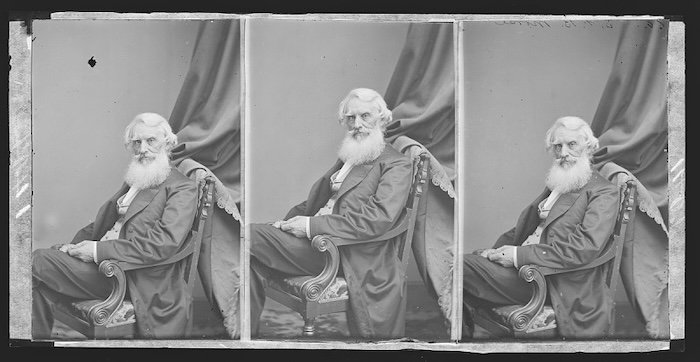Can the great barrier reef be saved from climate change? Theresa Fyffe gives us some insights at TED 2025
I often write about the storytelling side of climate change, as this modern day phenomenon will shape billions of stories in the coming decades. Some of the effects can be seen and felt above ground — fiercer storms, more intense fires, increased temperatures, droughts, etc. — but a very different sort of damage is occurring out of sight, below the surface of our oceans.
Coral reefs are one such example that have been given a great deal of attention, as they are under assault in much of the world, and no spot has achieved more notice than the Great Barrier Reef in Australia. In her talk at TED 2025, Theresa Fyffe talks about the work being done to reverse this trend.
As you can imagine, the full story is quite complicated, and Theresa could speak for hours on the topic. But in ten minutes she give able to give us an overview of the situation. She doesn’t tell the entire story, but does tell us enough to get us up to date, and hopefully to inspire us to dive further into what’s happening on the reef. Check out her TED Talk: A new lifeline for the world’s coral reefs.
Coral reefs are the most biodiverse ecosystem on our entire blue planet, home to more than a quarter of all marine life.
Key Points of Concern:
- Coral reefs affect the livelihoods of over one billion people
- They’re also anchoring the economies of over 100 nations
- Rising ocean temperatures can cause coral bleaching
- Already we have lost half of the world’s coral reefs
- By 2050 90% of coral could be lost
As the Executive Director Impact of the Great Barrier Reef Foundation, Theresa has a front-row seat to the innovative processes that are now being deployed to rebuild damaged reefs. Review the section from 4:09 to 4:56. In just 93 words & 47 seconds, she changes the tone of the talk, pivoting from problem to solution, and setting the stage for the balance of her story. She doesn’t go into depth, or use complex jargon that the audience won’t understand.
When Theresa introduces Uncle Bob, a Wopabara man from the Great Barrier Reef, her talk shifts from technology to human — it’s the story block I refer to as Someone Else’s Story — and we learn about the impact this innovation can have if deployed. To be honest, I would have enjoyed hearing more about Uncle Bob. By adding a minute, I would have developed a deeper connection to the topic.
So I’m asking you — don’t look away. Change your perspective and join us in the fight to sustain not just coral reefs, but the livelihoods, the cultures and the futures they safeguard. This isn’t game over. It’s game on.
Transcript
When I say Great Barrier Reef, what do you see? If you grew up in the 2000s, I’m guessing it might be Nemo and his best friend, Dory.
Or perhaps it’s this. It’s the best part of my job. Taking people underwater to witness such a wonder and so much life. Coral reefs are the most biodiverse ecosystem on our entire blue planet, home to more than a quarter of all marine life.
They are food, livelihoods and coastal protection for more than one billion people. They anchor the economies of over 100 nations and hold deep cultural significance for saltwater First Nations peoples, who see coral reefs as their family and the creators of life.
But increasingly, when I say Great Barrier Reef, people think of this. Or even worse, this. Sadly, our reef, my reef, has become the poster child for climate change. And here’s why.
Coral polyps, the tiny animals that build reefs, are incredibly sensitive to warming oceans. When stressed by heat, they expel the algae that nourish them, exposing their skeletons and turning them white, a phenomenon called coral bleaching.
Now a bleached coral isn’t dead, but it is sick and starving. And if temperatures stay too high for too long, it dies. Coral reefs are the absolute lifeblood of a thriving ocean. We thought them too big and too important to fail.
Already we have lost half of the world’s coral reefs. In 2024, the global extent of coral bleaching reached 53 countries and every ocean on Earth. By 2050, 90 percent of corals could be lost, and with coral reefs thought to be one of the most vulnerable ecosystems to climate change, we could witness their extinction in our lifetime.
Because of this, many people have already given up. They see the problem as just too big and the progress too slow. But I haven’t given up. And I’m here to tell you why you shouldn’t give up either. Prior to working at the Great Barrier Reef Foundation, I worked in medical research, and the parallels are surprisingly striking.
While many cancers have no cure, a cancer diagnosis is no longer a death sentence due to the expanding toolkit of treatments. This is how we must think of coral reefs. Yes, we need the cure. The solutions to climate change itself.
But right now, corals also need treatments to buy them time. Enter reef restoration. Reef restoration has been around since about the 1970s, mainly through coral gardening. It’s pretty simple. You take small pieces of coral, you grow them in an underwater nursery, and when big enough, you replant them in a reef.
While an important part of the reef restoration toolkit, this approach is slow, expensive and very difficult to scale. As a result, it is thought that less than 200,000 corals are planted across the world’s oceans each year, with many of these corals not surviving. We needed a breakthrough.
Over the past five years, 350 Australian scientists and engineers have been working on just that: technology to make reef restoration faster, cheaper and smarter. We’ve made more advancements in the last five years than the previous 50.
Using an automated process, we can now produce millions of baby corals, not just thousands. We can naturally increase the heat tolerance of these corals so they are better adapted to warming oceans. And we have developed ceramic cradles for mass deployment, eliminating the need for divers to replant each piece of coral by hand.
But in a race against time, the key to dramatically scaling our impact is to deploy this technology in a highly targeted way. We will focus our restoration solution on the reefs that are the most connected to other reefs via the ocean’s natural currents.
By seeding these highly connected reefs with more heat-tolerant corals, their subsequent and stronger offspring will be spread far and wide. By using this precision approach across the Pacific, restoring as little as three percent of coral reefs can drive the recovery of 50 percent of the entire ecosystem. This would be restoration on an unprecedented scale. And we’re making it local. Thank you.
Packaging these technologies into portable coral micro-nurseries for coastal communities to own and operate. The productivity of one single micronursery is expected to exceed that of all global coral gardening efforts combined today.
By 2031, we will be planting 1.2 million heat-tolerant surviving corals per year, about 30 times more than planted across the Pacific today. By 2040, it is our ambition to increase the global scale of reef restoration by 120 times. But we know — Thank you.
We know that the technology on its own isn’t enough. To have real impact, this technology needs to be in the hands of those on the front line, those that know the oceans best.
Meet Uncle Bob, a Woppaburra man from the Great Barrier Reef. His people have been caring for their sea country for millennia. Now when Bob talks to me of his country, he says, “Country is sick, country is crying.”
But with this technology, his community is empowered to be the first responders to heal their sea country by blending this modern innovation with their ancient knowledge. For many coral reefs, unfortunately, it is already too late. But for the half of the world’s reefs, including our Great Barrier Reef, that call the Pacific home, there is still time.
These corals haven’t given up. They are still resilient. They can regenerate. So if the corals haven’t given up, how can we? Now hope without a plan, it’s nothing more than a wish. But thanks to the generosity of the TED community, we have a plan. A lifeline for coral reefs.
So I’m asking you — don’t look away. Change your perspective and join us in the fight to sustain not just coral reefs, but the livelihoods, the cultures and the futures they safeguard. This isn’t game over. It’s game on.
Thank you.
Back to you…
If you have a complex topic that you want to talk about, whether it’s a scientific story or not, think about how Theresa was able to craft a narrative that was both brief and informative. That explained the problem and solution. That ended on a hopeful note, but in this case, with a call to action too. After someone hears your story, what do you want them to think, to feel, and to do? Have you enlightened them? Inspired them? Given them food for thought?
◆
contact me to discuss your storytelling goals!
◆
Subscribe to the newsletter for the latest updates!
Copyright Storytelling with Impact® – All rights reserved







